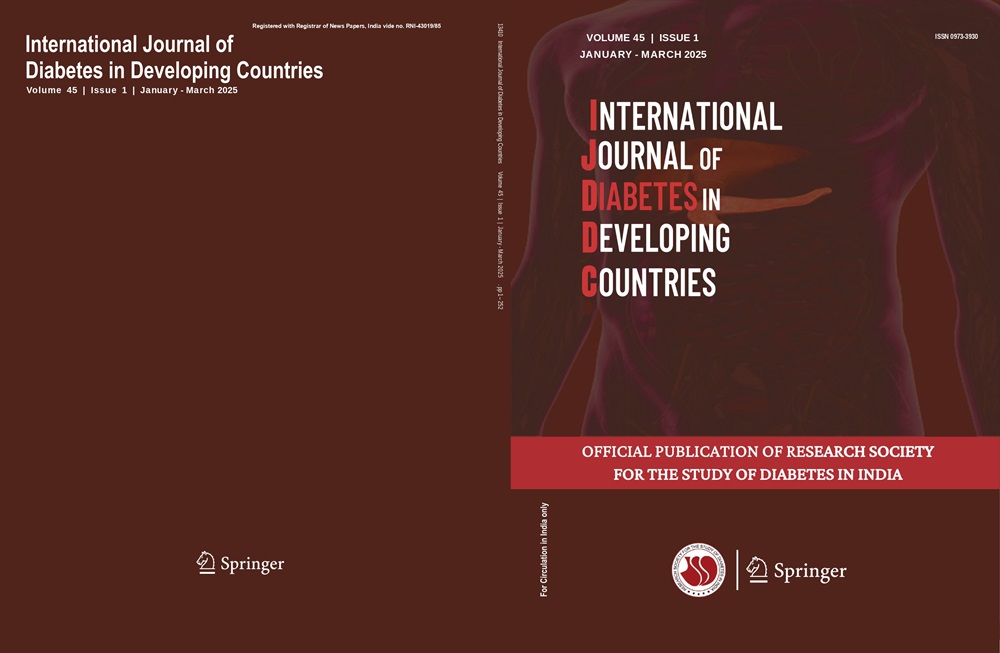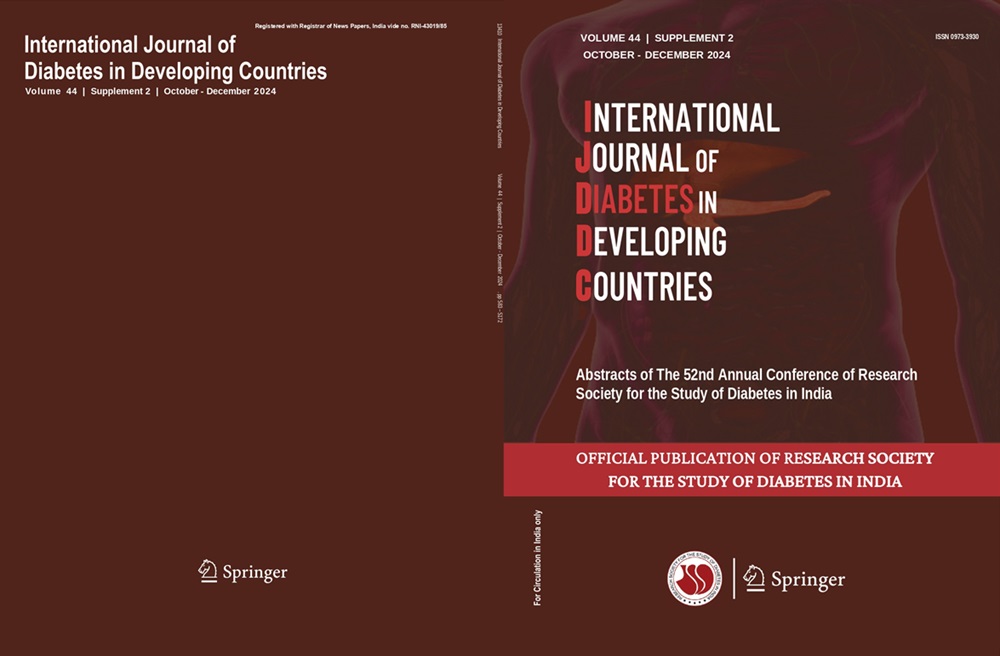Pieu Adhikary, Mainak Banerjee, Sudipta Banerjee, Shoeb Kaiser, Piyas Gargari, Jyothi Chowdhury, Subhankar Chowdhury
Keywords
T2DM • Obesity • Insulin resistance • Visceral fat • Subcutaneous fat • Adiponectin
Abstract
Objectives High molecular weight (HMW) adiponectin, biologically active form of the most abundant adipokine, is a potential biomarker of T2DM. As opposed to waist circumference (WC), dual energy X-ray absorptiometry (DXA) scan is able to distinguish between abdominal visceral adipose tissue (VAT) and subcutaneous adipose tissue (SCAT). To investigate whether additional measurement of adipokines and abdominal fat distribution is clinically meaningful to predict metabolic risk, we aimed to examine their association with T2DM irrespective of body mass index (BMI).
Methods Subjects aged 26–65 years with newly detected treatment naive T2DM (n = 81; females, n = 41) were included. Age, gender, BMI-matched healthy volunteers (n = 81; females, n = 40) were systematically recruited. Abdominal VAT, SCAT were measured using dual energy X-ray absorptiometry (DXA)-scan. ELISA was used to measure fasting insulin, HMW-adiponectin, tumor necrosis factor (TNF)-α, interleukin (IL)-6 levels.
Results VAT was significantly higher in T2DM versus BMI-matched healthy subjects, whereas SCAT, HMW-adiponectin were significantly lower in T2DM in both genders. In linear regression analysis adjusting for confounders like BMI and WC in men and women separately, abdominal SCAT had significant (p = 0.01) positive association with HMW-adiponectin levels. After adjusting for age, gender, blood pressure and BMI, HMW-adiponectin (Odds ratio = 0.34; 95%CI: 0.19–0.59; p < 0.001) and abdominal SCAT (Odds ratio = 0.26; 95%CI: 0.14–0.48; p < 0.01), not VAT or WC, were independently associated with T2DM.
Conclusions HMW-adiponectin and DXA-derived abdominal SCAT may independently predict metabolic risk irrespective of BMI. Prospective studies need to explore whether paucity of abdominal SCAT could be one of several factors contributing to non-obese T2DM in Asian Indians.




